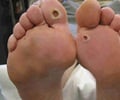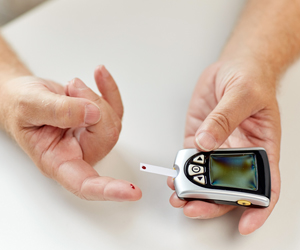
‘A possible link has been found between titanium dioxide, a colorant in food and paints, and type-2 diabetes.’
Tweet it Now
The team examined eleven pancreas specimens, eight of which were from donors who had Type 2 diabetes (T2D) and three from donors who did not. Whereas the three non-diabetic pancreatic tissue specimens contained no detectable TiO2 crystals, the crystals were detected in all of the eight T2D pancreatic tissue specimens. The UT Austin researchers found more than 200 million TiO2 crystallites per gram of TiO2 particles in the specimens from T2D donors but not in the three specimens from non-diabetic donors. The UT study was led by Adam Heller, professor in the McKetta Department of Chemical Engineering in the Cockrell School of Engineering, a 2007 recipient of the National Medal of Technology and Innovation and a lifelong champion for diabetes research. Heller was a leading member of the teams that designed FreeStyle, the first painless blood-glucose-monitoring system used by millions of people with diabetes worldwide; and the glucose-sensing technology of the FreeStyle Libre system, developed by Abbott Diabetes Care.
"Our initial findings raise the possibility that Type 2 diabetes could be a chronic crystal-associated inflammatory disease of the pancreas, similar to chronic crystal-caused inflammatory diseases of the lung such as silicosis and asbestosis," Heller said.
In the mid-20th century, titanium dioxide pigment replaced highly toxic lead-based pigments. It became the most commonly used white pigment in paints and in foods, medications, toothpaste, cosmetics, plastics and paper. As a result, annual production of titanium dioxide has increased by 4 million tons since the 1960s.
According to the World Health Organization, the number of people with diabetes has quadrupled during the past four decades, affecting approximately 425 million people, with T2D comprising the majority of recorded cases. Although obesity and an aging population are still considered major factors leading to a rise in T2D cases worldwide, Heller's study suggests that increased use of titanium dioxide may also be linked to the rapid rise in the number of people suffering from the disease.
Advertisement
Given the wide-reaching implications of his findings, Heller is keen to repeat the study, but this time using a larger sample. "We have already begun a broader study," he said. "Our work isn't over yet."
Advertisement
Source-Eurekalert















